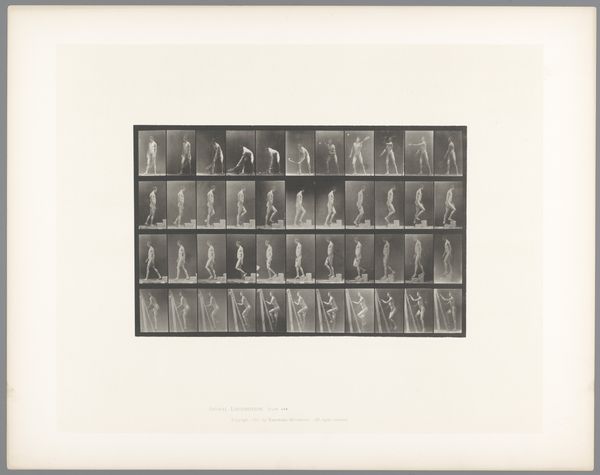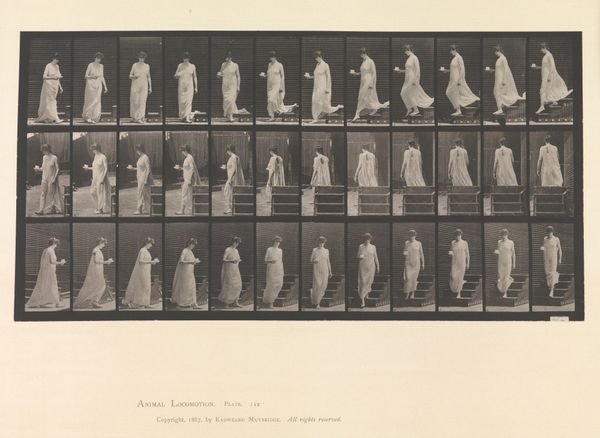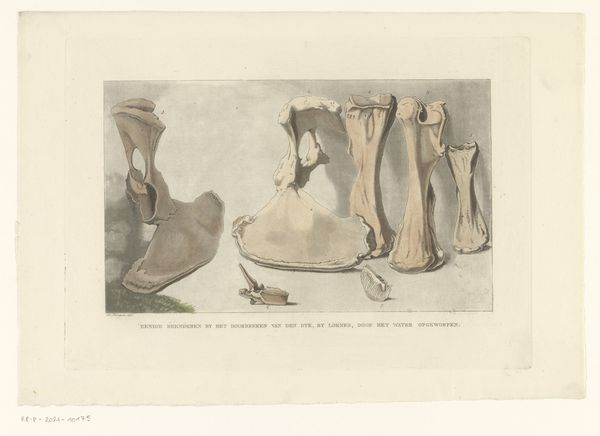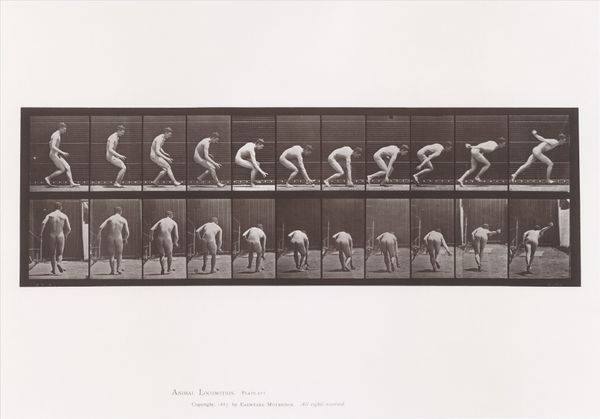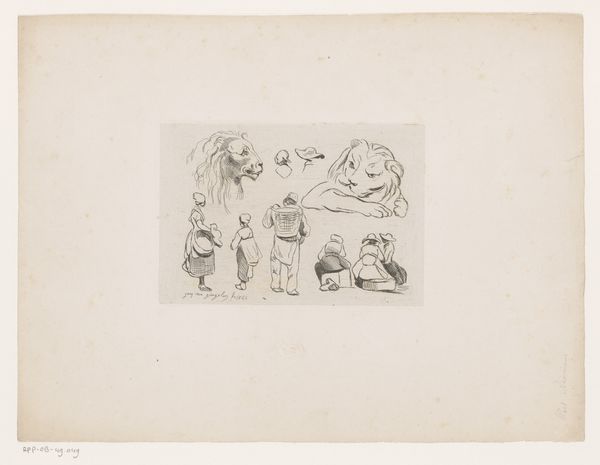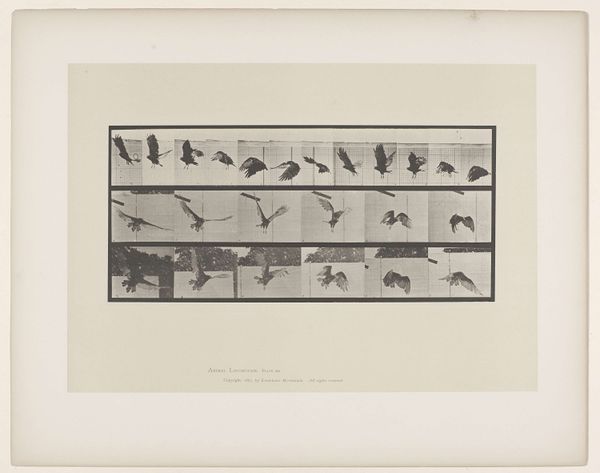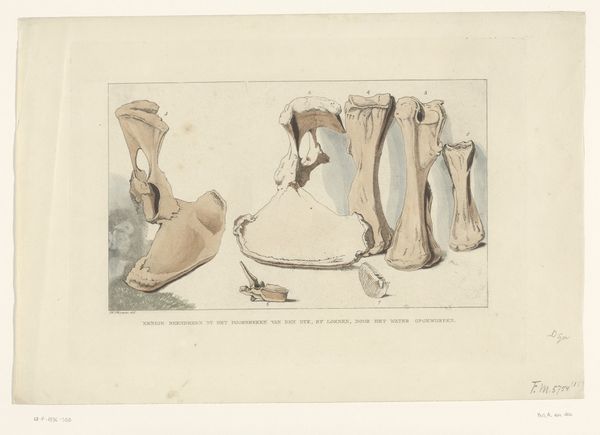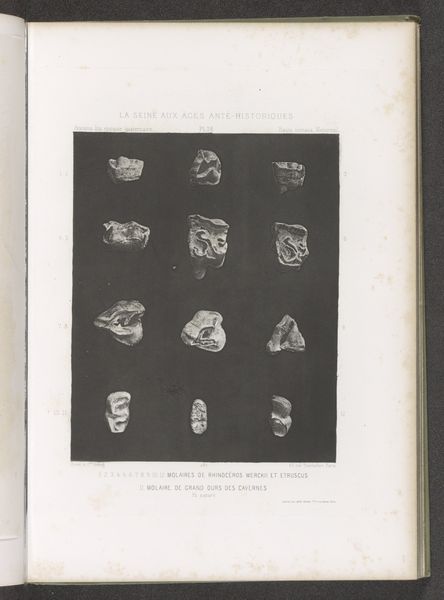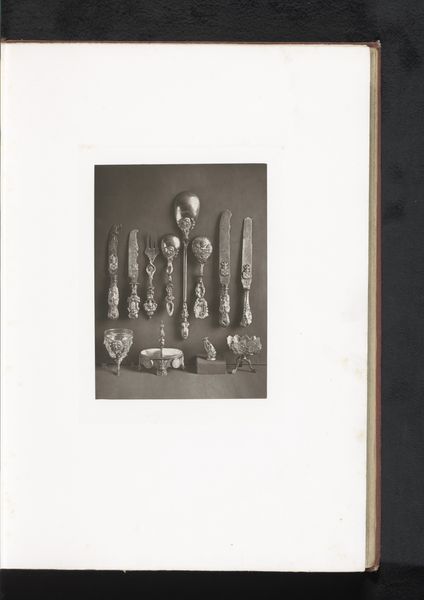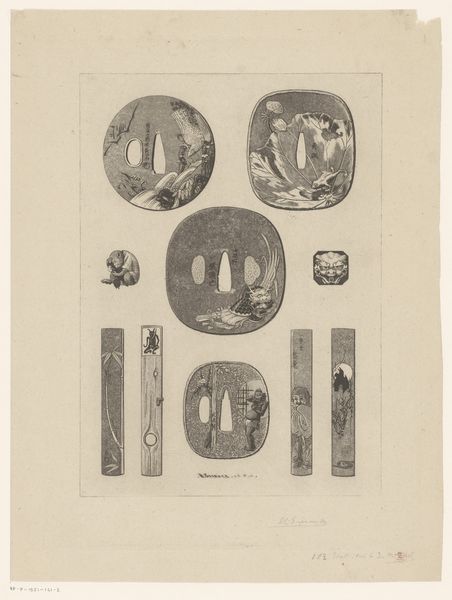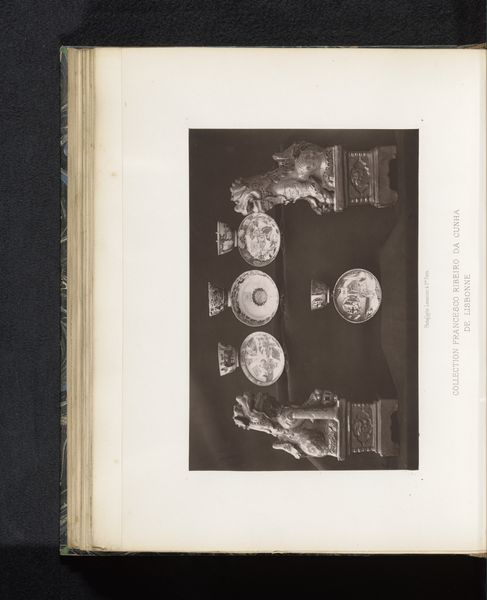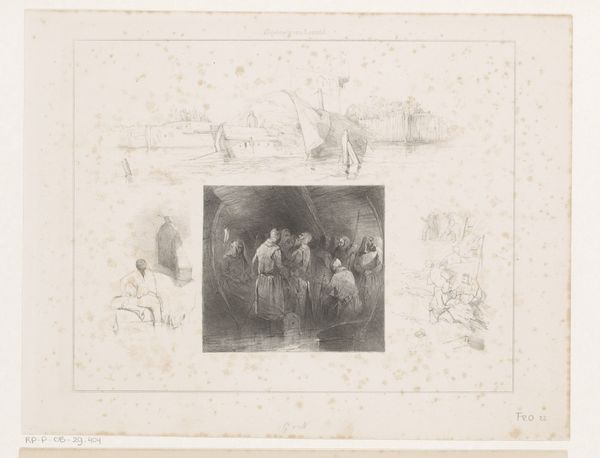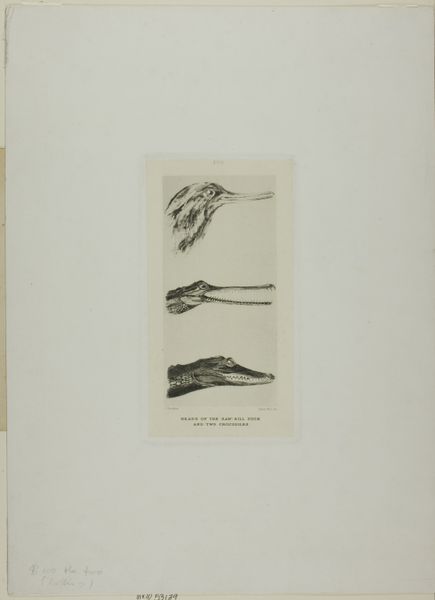
photography, gelatin-silver-print
#
portrait
#
photo of handprinted image
#
pictorialism
#
figuration
#
photography
#
gelatin-silver-print
Dimensions: height 250 mm, width 295 mm, height 483 mm, width 611 mm
Copyright: Rijks Museum: Open Domain
Curator: Here we have Eadweard Muybridge's "Woman Moving, 'Miscellaneous - stooping, etc'" from 1887, a gelatin-silver print that captures a series of movements. What are your initial thoughts? Editor: I am struck by how it feels both scientific and dreamlike. The repetition creates a staccato rhythm, yet the woman’s dress gives the scene an ethereal, almost ghostly quality. It makes me think about labor. Curator: Absolutely. I find it fascinating to consider this work in the context of Muybridge's larger project of documenting human and animal locomotion. But, of course, the act of photographing itself, particularly women during this period, requires further intersectional scrutiny. How does the objectification play into artistic intention? Editor: That’s key, isn’t it? He's using the photographic process to dissect movement, reducing it to discrete units for study, but in doing so, also dissects the woman’s body itself. The labor involved—her performance for the camera, his darkroom manipulation of these gelatin silver prints – it all speaks to a material exchange and objectification that is uncomfortable. Curator: Indeed, and while these studies contributed to scientific advancements, they also solidified societal power structures. How do we reconcile that historical context with the visual elegance of the photograph itself? Thinking about contemporary artists working today, appropriating early photography techniques to dismantle existing colonial narratives feels like a worthwhile exercise here. Editor: I agree. I can't help but think about the materiality of the photographic print, though—the chemicals, the silver, the specific processes Muybridge would have used. Those very materials carry their own history of extraction, production, and power. Curator: Which prompts crucial questions about how our appreciation of the artistry intersects with the means of its production. Thinking about how it still translates into the media we consume today, through TikTok dances, film, AI… the relationship to gender feels critical. Editor: Precisely. Seeing how physical processes transform into digital and impact our daily lives offers great meaning in viewing this photo today. Curator: Understanding this provides a nuanced entry point to the conversation about art's role in reinforcing—or challenging—dominant cultural narratives. Editor: Indeed. Muybridge's photograph offers not just a study of movement, but a lens through which to examine labor, gender, and the materiality of the photographic medium.
Comments
No comments
Be the first to comment and join the conversation on the ultimate creative platform.
